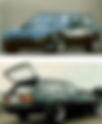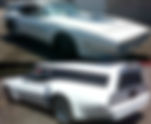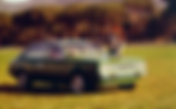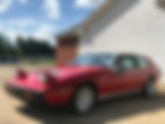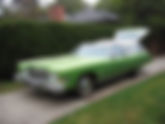Search Results
2341 results found with an empty search
- 1980 Rolls-Royce Silver Shadow II Shooting Brake
There was never, of course, an official factory-bodied estate version of the Shadow, but that did not deter those wealthy enough from commissioning their own, this example being created at the behest of the late John Entwhistle, legendary bass guitarist with 'The Who.' The coachbuilder is not known, but eight years ago, Bonhams sold a similar car that had been converted by FLM (Panelcraft) Ltd of South London. The current vendor purchased this car from John Entwhistle's wife via Hanwells in West London seven years ago and then sent it to Coway coachbuilders in Bolton to be refurbished. The vehicle has been kept at an estate in Perthshire, Scotland, where it was mainly used for grouse shooting, and has been garage stored in a 'bubble' to maintain ideal air temperature. It has been routinely serviced by Alastair Scott of Abernethy, Perthshire, a recognized Rolls-Royce mechanical engineer, and over the last over seven years has not given any trouble. The car is offered with sundry restoration invoices, current MoT/tax, and Swansea V5C registration document. View the World's Largest Shooting Brake Archive Here (Sources Included)
- 1980 Porsche 924 Kombi
The Porsche 924 Kombi was built by a German coachbuilder Gunter Artz; 20 examples of the 924 Kombi were constructed in 1980-1981, using a 924 Turbo as a base a Carrera GT-look body kit. View the World's Largest Shooting Brake Archive Here (Sources Included)
- 1980 ARTZ Audi UR Quattro Kombi
ARTZ has somewhat of a knack for building strange variants of production cars. However, this took the iconic rally/road car and turned it into a 3 door estate. View the World's Largest Shooting Brake Archive Here (Sources Included)
- 1979 Rolls-Royce Silver Shadow Shooting Brake
Commissioned in 1984 by Krug Champagne – one of the leading brands in the Louis Vuitton Moët Hennessy group – this panel van/shooting brake is based on a 1979 Rolls-Royce Silver Shadow II. It's got two seats up front for driver and passenger and a pair of refrigerators in the back. Adorned with special Krug livery in white and burgundy with acres of chrome, the attention to detail goes down to the special cork key fob. It was sold by the vineyard a few years back but has now been reacquired, returning to the House of Krug in Reims, Champagne-Ardenne, France, to serve as a museum piece. View the World's Largest Shooting Brake Archive Here (Sources Included)
- 1978 Lamborghini Faena Concept by Frua
The Italian coachbuilder Pietro Frua created the only four-door Lamborghini in existence in 1978; the Frua Faena was constructed on a reinforced 1974 Espada Series II chassis (nr. 18224). It took Pietro Frua 8 months to create his four-door Lamborghini; he stretched the standard Espada chassis 178 mm (7 in) to accommodate the rear seats and ended up with a car totaling 4586 mm (18 ft) in length which added 200 Kg (440 pounds) to the total weight. This ‘special’ was revealed on the 57th Salone Internazionale dell’Automobile, in Turin during the spring of 1978, and it was shown again to the public at the 1980 Geneva Auto Show. The car’s lines looked clean at the front, with big headlights mounted in twin pop-up units, but the rear design spoiled the vehicle. It included a sliding sunroof, unlike the weird-looking glass panel found on one specific Espada. Although it was very nicely built, the Frua Faena didn’t prove a success, and Pietro Frua hoped it could be produced in small quantities, but this show car was the only one ever made. After the Geneva Auto Show, the car was sold to Lambo-Motor AG in Basle, who sold it to a German collector. He still owns the car, but it remained registered in Switzerland. In 1996 the Faena could again be admired at the Pullicino Classics in London; the vehicle was in excellent condition, although it wasn’t restored yet. View the World's Largest Shooting Brake Archive Here (Sources Included)
- 1978 Porsche 928 Shooting Brake by Evil Genius Racing
While Evil Genius Racing was building the roll cage for the Members Only car, it became apparent that making a shooting brake rear body on a 928 just required a couple of cuts in a pillar, some bending, and some welding. The Members Only car was then sold to a team in Florida and shipped across the country. After a few years of racing in California, the 928 shooting brake was sold to Come Monday Motorsports and shipped from California to Florida. Since that time, this car has campaigned at various South and Gulf Region LeMons events. View the World's Largest Shooting Brake Archive Here (Sources Included)
- 1977 Renault Project 121
A small, sporty shooting brake developed in partnership with Ligier from an original idea by Robert Broyer, who had designed the Renault 14, upon which this concept was based. Had the project gone ahead, Ligier would have built the car for Renault. View the World's Largest Shooting Brake Archive Here (Sources Included)
- 1977 Pontiac Firebird Trans Am Shooting Brake
In 2015, this custom 1977 Pontiac Firebird Trans Am Shooting Brake appeared on eBay and had bids reaching $4,150 in the final hours. This breadvan is powered by a 400 cubic inch Pontiac V8 that was emissions choked down to 180 horsepower and 325 ft-lbs of torque. Performance with a stock 400 and slushbox transmission will be lackluster but uncorked, they can make plenty of power and noise. View the World's Largest Shooting Brake Archive Here (Sources Included)
- 1977 Pontiac Firebird Type K by Pininfarina
The Type K (for Kammback) concept, initially shown in 1977, was developed by Gerry Brochstein under GM executive David R. Holls. The design did away with a conventional rear tailgate in favor of long, gullwing-style rear windows on either side that permitted easy access to the entire cargo area. Outback, a vertical rear window sat above a four-bar array that traversed the width of the rear, masking the taillamps and stop lamps unless they were illuminated. Seeing the potential for such a product, GM design head Bill Mitchell approved the construction of two concepts based upon production Firebirds. One was gold with a beige interior, while the second was a more striking silver with a red interior. The conversion, which utilized steel body panels, was farmed out to Italy's Pininfarina, which had ample experience in assembling such concepts and low-volume models. The public gave the Type K concepts an enthusiastic thumbs-up, and GM began to explore its options for production. One idea was to farm the work out to Pininfarina in Italy. At the same time, a second and potentially lower-cost plan called for building the Type Ks in the United States under Pininfarina's supervision. Somewhat of a halo car, GM targeted a selling price of around $16,000 for the Type K, at a time when a base Firebird was priced from $4,753 and a Trans Am from $5,889. Though the reasons why are unclear, the gold Type K was reportedly destroyed by GM. The silver car, fitted with a 1979 Trans Am-style front end, appeared in a March 1979 two-part episode of The Rockford Files ("Never Send a Boy King to do a Man's Job"), driven by Odette Lepandieu (played by Trish Noble). With this much exposure and positive press, the Type K almost seemed destined for production. Until the final build cost assessment came in, that is. Even with Pininfarina doing all it could to contain costs, the final retail price of the Type K would have needed to be in the $25,000 range for GM to turn a profit, making it as expensive as two 1979 Corvettes. To make matters worse, a new Firebird was already in the works by the 1979 model year, which meant that the cost of developing a new Kammback body would also need to be factored in. The idea of a two-door wagon on the F-body platform was killed off a second time. View the World's Largest Shooting Brake Archive Here (Sources Included)
- 1976 Rolls-Royce Silver Shadow Shooting Brake
Besides a couple of photos, not much else is published on this clean Silver Shadow. Please comment if you know more. View the World's Largest Shooting Brake Archive Here (Sources Included)
- 1976 Vauxhall Magnum Sportshatch
The 1976-only Sportshatch was based around the Vauxhall Magnum Estate but fitted with the famous (and slippery looking) front end of the HP Firenza coupe. The HP was meant to be a new sporting flagship for Vauxhall, with anticipated sales of around 2000 a year. In the end, however, just over 200 were built in total, leaving Vauxhall with a large quantity of its ‘Droop Snoot’ nose cones leftover. View the World's Largest Shooting Brake Archive Here (Sources Included)
- 1976-1977 Triumph TR7 Tracer
Coachbuilder Crayford was commissioned by a Triumph dealer, Page Motors (notice the dealer logo on the side), to convert the 2 seater TR7 into a sporting brake. The Tracer was the result. In addition to the elongated roofline and large boot area, two additional fold-down seats were added, turning the car into a 2+2. Only two cars were built as part of the project in 1976/77. They were making this one of the rarest TR7 conversions. View the World's Largest Shooting Brake Archive Here (Sources Included)
- 1975 Lancia (Beta) HPE
The Lancia Beta HPE 2000 is a passenger car from Lancia, with front-wheel drive, a front-mounted engine, and a three-door estate/station wagon body style. The Lancia Beta HPE 2000 belongs to the 828 model family from Lancia. Powering the Lancia Beta HPE 2000 is a double overhead camshaft, 2 litre naturally aspirated four-cylinder motor and A 5-speed manual transmission that delivers the power to the driven wheels. The claimed maximum speed is 180 km/h (112 mph). View the World's Largest Shooting Brake Archive Here (Sources Included)
- 1975 Ferrari 365 GT4 Croisette SW by Felber
Ferrari 365 GT4 Croisette by Felber, 1975. Willy Felber was a Swiss businessman and Ferrari dealer who made bespoke versions of Ferraris and other cars. The Croisette was a shooting brake version of a Ferrari 365 GT4; it remained a one-off. View the World's Largest Shooting Brake Archive Here (Sources Included)
- 1975 Jensen GT
When the Jensen Healey convertible was introduced in 1972, it became obvious that there were a few issues with the reliability of the Lotus Type 907 1973cc engine. The sports estate proved to be a competent and practical road car with a Lotus Twin-Cam 144 bhp engine now mated to a 5-speed Getrag gearbox, 2 + 2 seating, and a reasonably sized boot. Still, by the time the Jensen GT was introduced in September 1975 (they had dropped the Healey part in the name as Donald Healey had now left the company), most of the early teething troubles had been ironed out. Under the shadow of the industrial crisis of the 1970s, including rising fuel costs which saw the demise of the big-engined Interceptors, Jensen Motors went into liquidation in May 1976, meaning that the GT production runs only lasted nine months with a total of only 509 cars built, less than half being right-hand drive. View the World's Largest Shooting Brake Archive Here (Sources Included)
- 1975-1986 Reliant Scimitar GTE (SE6/ 6A/B)
In 1975, the SE6 series was promoted to the executive market. These models were two-door sports estates, again with the Ford V6 3.0 L engine used in the SE5A with 135 bhp. The wheelbase was increased by 4 inches (10 cm) and the track by 3 inches (8 cm), making the cars correspondingly longer and broader than their predecessors. The extra length improved rear-seat legroom and access, which enhanced the car's credentials as a 'genuine' four-seater. Noticeable changes from the earlier models were the increase in the size of the outer headlamps and the replacement of the chrome-plated bumpers with rubber ones. 543 SE6 models were produced. In 1976, the SE6A was introduced. An easy way to spot an SE6A from an SE6 is the change to orange from red reflectors on the rear extractor vents, and the three vertical grooves in the front bumper (in front of the wheel arches) were removed. 3877 SE6As were made, making it the most popular version of all the SE6 shape. Ford had stopped making the "Essex" engine by 1981, and production stopped completely in 1988, so one of the major differences with the SE6B was the engine. The German-built Ford "Cologne" 2.8 L V6 was used instead. The SE6B failed to replicate the success of the earlier models. The design may have aged gracefully, but demand tailed off. The last models were a real improvement over the earlier SE6s, though, as they were lighter, stiffer, and more comprehensively equipped. Only 437 SE6Bs were manufactured. Production ceased by 1986. View the World's Largest Shooting Brake Archive Here (Sources Included) 1978 Reliant Scimitar GTE 1980 Reliant Scimitar GTE
- 1974 Triumph TR6 Shooting Brake
Triumph TR6 Shooting Brake. The TR6 was sold only as a two-door convertible (with a factory removable hardtop), but at least one owner has converted the sports car into a sports estate. View the World's Largest Shooting Brake Archive Here (Sources Included)
- 1974 Lotus Elite
The sloping wedge we see here was the second time Lotus used the Elite name in its lineup. The first was back in the late 1950s when the Elite was a super-light coupe weighing 1,110 pounds. This original Elite remained in production from 1958 to 1963, replaced by the entirely more famous Elan. Lotus would leave the Elite name dormant for some time until it was ready to use it on an entirely different sort of vehicle. Debuting for 1974, the Elite shed its light on a compact coupe body for a wedge design with a hatchback. It was the sort of thing the British and select other humans call a shooting brake. Though it was still considered a sports car, the Elite’s new persona no longer focused on being light and bare bones. Much more a luxurious grand tourer, the Elite paired its 2.0-liter inline-four engine to a manual transmission of four or five speeds or an optional three-speed automatic. The 2.0 was a more modern engine than Lotus used in previous vehicles, featuring dual overhead cams, an aluminum block, and 155 horsepower. This engine would go on (with modifications) to power the Esprit. The original, simple tiny Elite was turning in its grave — but that was the plan. All Elites had four comfortable seats, room for cargo, and wood on the dash. Lotus was in the middle of a product revamp and image revitalization, the goal being competition with bigger and more serious manufacturers. And those manufacturers didn’t just offer tiny composite coupes. Lotus’ rivals had larger, more serious cars with buttons embedded in their wood panel dashes. Lotus continued with a fiberglass shell for the Elite, mounting the whole thing to a steel chassis from the predecessor Elan and Europa. The slick (though blocky) shape made for an impressive drag coefficient of just .30. The Elite’s design had considerable input from Lotus founder Colin Chapman, and along with the similar Eclat, would become the last two roadgoing cars with significant Chapman influence. View the World's Largest Shooting Brake Archive Here (Sources Included)
- 1974 Fiat 130 Maremma
In 1974, Sergio Pininfarina presented two versions of the Fiat 130 that he had dreamed up to Fiat management: the Maremma and the Opera sedan. True, there's no ruling out that the designer's close friend Gianni Agnelli was the one to propose a shooting brake version of the 130. At the time, the Fiat 130 sedan sales were far from impressive, even after launching a coupé version in 1971 with a 3.2-litre V6 engine and a revamped interior, so they needed something extraordinary that could pique the interest of potential buyers. Something luxurious that also had a sense of sportiness – for example, the Maremma, named after the region in Tuscany famous for its olive groves and vineyards and was popular among hunters. View the World's Largest Shooting Brake Archive Here (Sources Included)
- 1974 Cadillac Eldorado Estate Wagon
A number of coachbuilding companies created Cadillac station wagons back in the 1960s and 1970s. Many were based on Fleetwoods or DeVilles and wound up looking like hearses. View the World's Largest Shooting Brake Archive Here (Sources Included)

%20(4)_edited.png)

